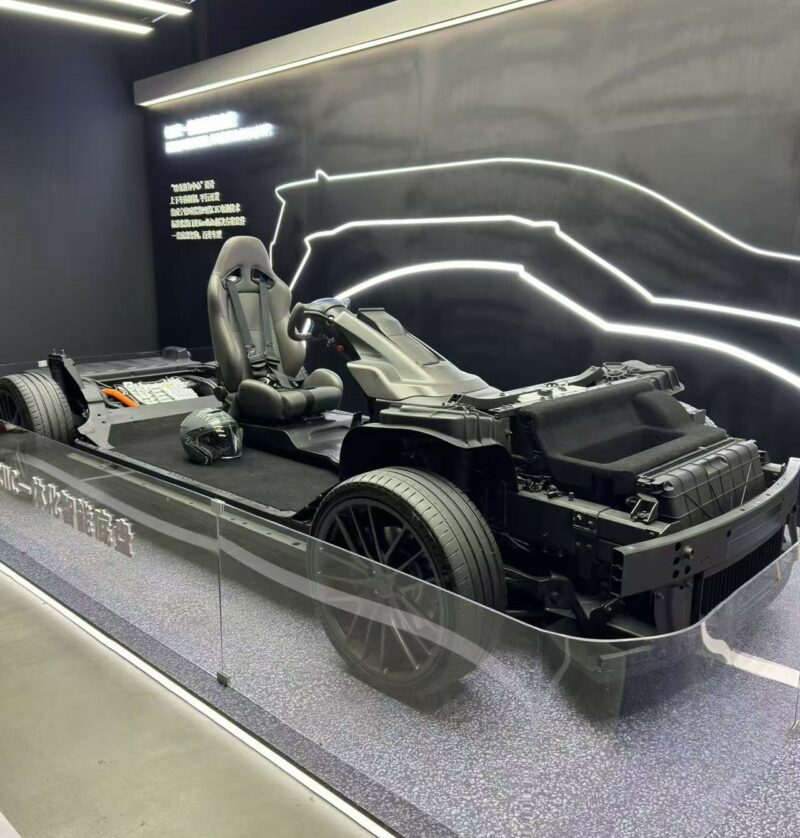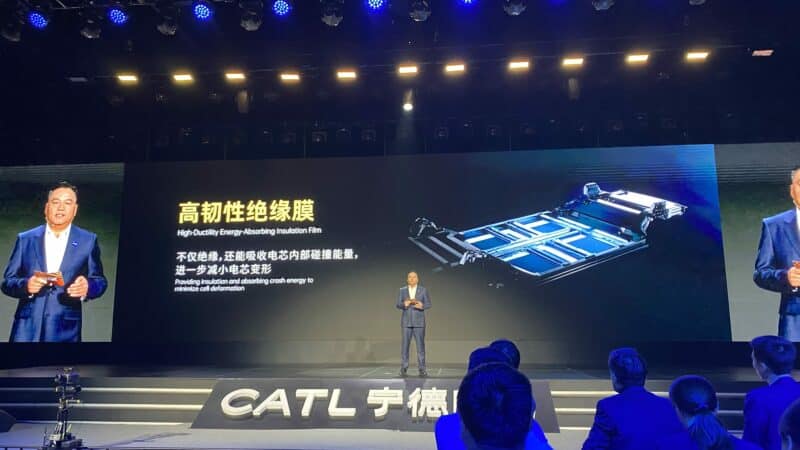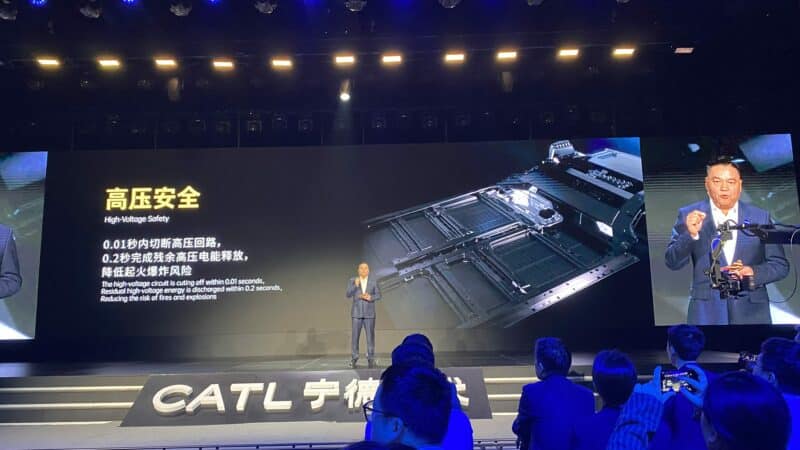On December 24, CATL officially launched its new Bedrock skateboard chassis. It was also announced that a new model from the Avatr brand would be the first car to use this, showing deepening cooperation between the two.
At the press conference, CATL stressed both the safety and the performance of the new bedrock skateboard chassis. Firstly it claims a cruising range of more than 1000 kilometers. According to CATL, the Bedrock chassis is the CIIC ultra-high safe flagship edition, as seen in the slide show.
To ensure safety, CATL has concentrated on three chassis-related parts: structure battery cells and high voltage system. CATL played a video demonstrating a frontal collision of a test car into a wall at 120 km/h. It should be noted that In the current C-NCAP test such a collision is done at 56 km/h. This means that a 120 km/h frontal or column collision has increased the collision energy by 4.6 times.
The result showed that the passenger compartment of the car remained largely unscathed. Perhaps more importantly, still, there was neither a fire nor an explosion.
To achieve this, there’s an integrated design of the car body and battery with multiple blocking paths to reduce chassis invasion speed. 2000Mpa hot-stamping (press hardening) steel and 600Mpa aluminum alloy are matched with each other to improve the passive safety performance of the overall structure.



To absorb part of the collision energy and reduce deformation of the batteries, the battery cells are optimized using a high toughness insulating film. This helps reduce the risk of thermal runaway, but if it does occur, hot gasses will be just discharged from the bottom, which helps reduce the temperature of other components.
In a collision, the high-voltage circuit is cut off within 0.01 seconds, and the residual high-voltage energy is discharged within 0.2 seconds, thereby reducing the risk of fires and explosions.
The core powertrain, brake-by-wire, steering, suspension, and three-electric module are all integrated on the skateboard chassis. CATL says that it can support fully redundant drive-by-wire systems along with level 3 to level 4 driving assistance. Meanwhile, the range can exceed 1000 km.
A skateboard chassis reduces the development cycle time for chassis components. This has a knock-on effect on the development time of new models, meaning that a new model can be put into production within 12 to 18 months.


It’s claimed that the chassis has a “battery-centric design,” allowing it to integrate with CATL’s fourth-generation CTC (cell to chassis) battery technology. This helps with structural rigidity and can reduce the weight and space of the battery packs.
It was announced at the press conference that Avatr would be the first brand to use the new Bedrock skateboard chassis. Currently, this car is being referred to as a new N plus model. Little is known about this car other than that it will use Bedrock technology along with energy management and intelligent technology, according to a slide.
The new car is likely to debut in the second half of 2025. It should be noted that the new car is not the first car to use a CATL chassis skateboard. Earlier this year, it was reported that an 800V version of the Neta S wagon would use such a chassis. However, it appears that this car has yet to reach production due to the ongoing financial problems of Neta.
At the press conference, CATL and Avatr signaled closer cooperation in the future. CATL is the second largest shareholder in the Avatr brand and holds a 14.1% share. Changan with a share of 41%, is the largest shareholder.
Sources: Autohome, Weibo


